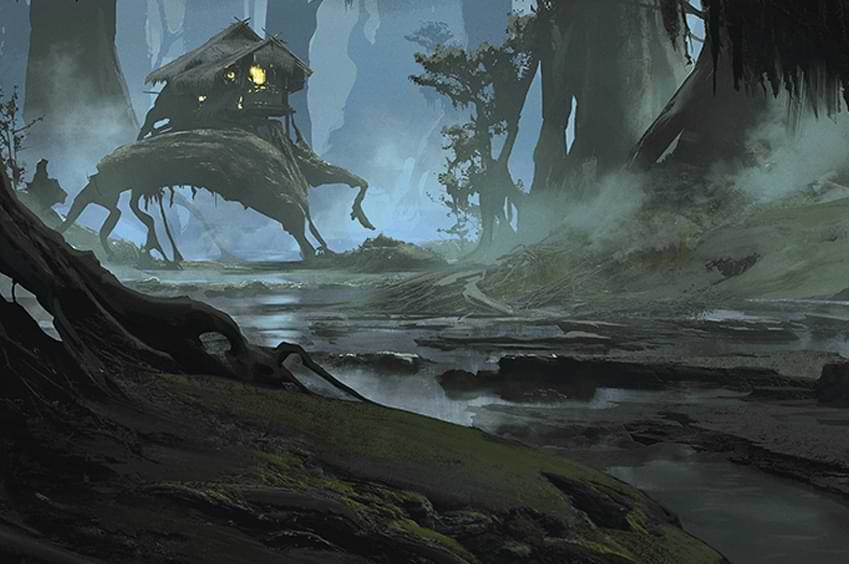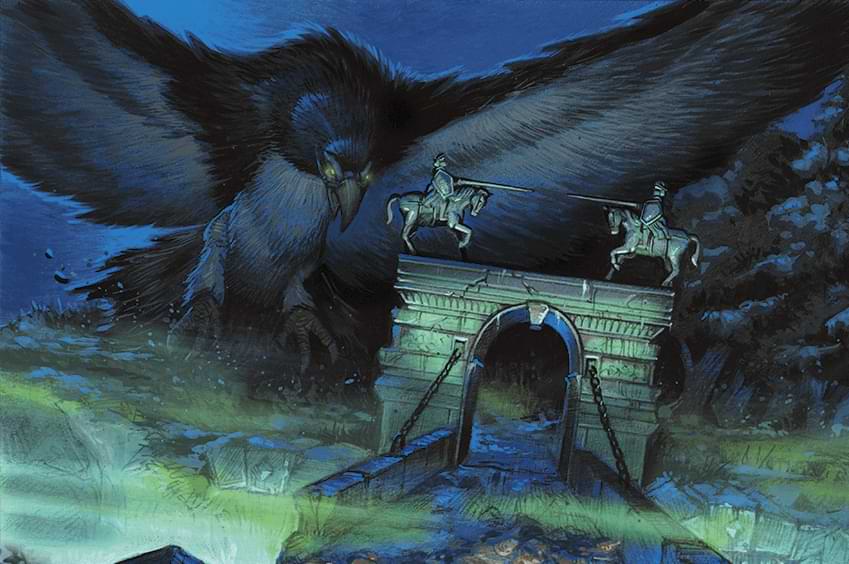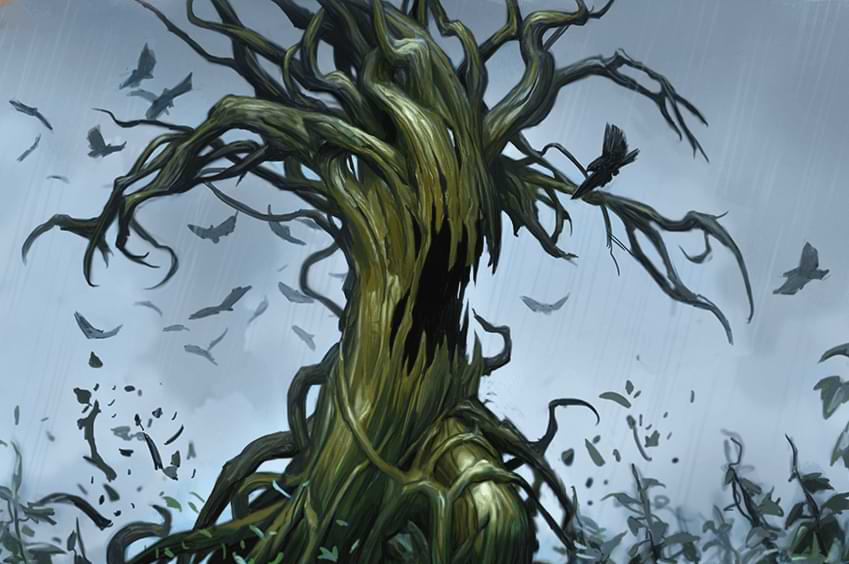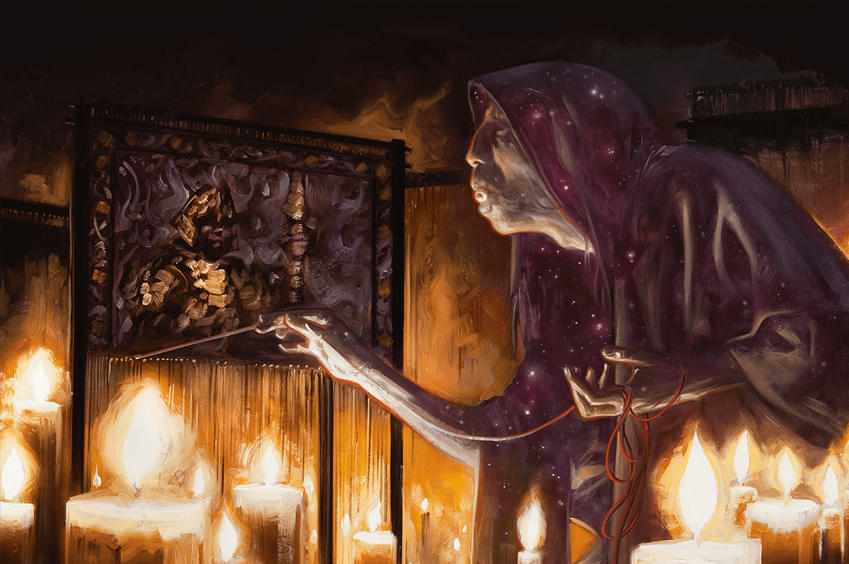The latest Dungeons & Dragons sourcebook, Van Richten’s Guide to Ravenloft, allows players to open an in-depth chapter into the world of Horror Tabletop storytelling. But horror isn’t for everyone, right? Wrong! Whether you’re an online party of friends, a middle school D&D club, or even a family that does game nights, here are a few tips and tricks for creating a game that is both frightening AND fun for everyone!

Communication & Customization
The genre of Horror is a wide one. It can range from Gothic and Mystery, all the way to Post-Apocalyptic and Sci-Fi. Because of this, horror can mean a lot of different things to everyone. We all have our fears, and depending on what they are, we may not want to confront them. To ensure your horror adventure is as delightful as it is dark, doing a check-in during Session 0 to see what ideas or elements your players DON’T want to explore is crucial. Some players may fear spiders but are alright with blasting them to bits with a handy Fireball. Others may fear clowns and don’t particularly want to come face to face harlequins during a campaign. Make a list of the topics, situations, and fears that your players do not want to encounter.
Let’s explore the endless zombie nightmare of Falkovnia as an example. So you want to do this zombie campaign, but a few younger adventures in your party are uncomfortable with the idea of zombies eating them. What do you do? Breakdown the essence of this adventure: Fighting hordes of enemies that terrorize and crave something after death. By knowing the campaign’s essence, you can then modify the specifics to best fit the ages (and boundaries) of your players.
Change what the zombies crave. Instead of flesh, perhaps they crave raw magic, and there is a hidden potent source somewhere in town, causing hordes and hordes to ambush Falkovnia every night. It’s up to your party to solve the mystery behind this magical source and aid the villagers in ridding this terrifying menace once and for all.
With a party of high school adventurers interested in fighting waves of flesh-hungry zombies (but want to stay away from R-rated carnage), you can modify the scenarios you create. You don’t have to give The Walking Dead level descriptions of a zombie graphically devouring an NPC alive. But you can definitely have them bang against the shelter that your heroes are huddled in or pull a screaming NPC into the darkness for a frightful storytelling moment.
Ultimately as the Dungeon Master, YOU are in charge of the story at all times. Just like you can turn on the lights while watching a scary movie, let your players know that they are safe to communicate when the fear needs to be not AS fearsome, whether the group has a clear table messaging, or nervous and anxious players have a private way of communicating with their DM. YOU have the power to change and adapt elements of the adventure to suit your players’ needs. Communication is absolutely key in helping you and your party all have a fun, frightening, and memorable adventure.

Grisly Gameplay
On the topic of horror, nothing is more terrifying than random Ability Checks. Every player has a memory of their stomach dropping in fear when entering a new location and a DM immediately demanding a check. Checks allow the Dungeon Master to build tension in the room just via gameplay alone. And these can frighten players of ALL ages. For instance, perhaps some of your younger adventurers are taking their first steps into the halls of Strahd’s castle. You ask your Cleric to roll a Perception check. They get a 14, and you respond with “Good to know”. The anxious thoughts of your party will start to spiral. What (or who) is in the hall with them? Does the Cleric see something that will be revealed later? Or is something there so terrifying that only an 18+ roll could reveal it? The mind is where the real horror lives, so use that to your advantage! Even if you don’t have the “scariest” scenario or villain for your players, random checks can easily keep them on their toes.
Moreover, feel free to be fast and loose with descriptions during encounters or terrifying moments. Say that same Cleric turns a corner and immediately encounters an unknown entity. Keep your description vague. “The shadow lunges at you, and you immediately feel the bones in your arm crunch.” That shadow can be a lot of different things for a lot of different people. Perhaps a gruesome monster wandering the halls of the castle? A piercing trap set by Strahd himself? Or even an NPC? Even if your horror campaign is as gentle as your young party of adventures exploring a Haunted House (a la Scooby-Doo) to uncover the “Ghost” inside (it was old-man Withers all along!), you can still creatively use the gameplay of D&D to create fun moments of fear and suspense for even the youngest of players.
Rember: Good narrative horror is not a non-stop fright fest. It is full of highs and lows, terror, and relief. Be sure to find the melody in your game. Don’t shy away from light and funny moments. Humor alleviates tension and allows for more fearful moments to hit harder. Especially for your younger adventures, lighter moments allow them to relax and appreciate the spooky storytelling even more. Think of it like putting salt into a cake. That bitter flavor actually enhances the sweetness even more! And so will you by navigating and balancing the tone throughout your horror adventure. So if your players make a joke, or try and defeat a foe in a silly, creative manner, don’t shy away from it - lean into it. You never know what story-changing moments can be born from even the silliest roll in a scary adventure.

Raising the Stakes
Whether you are interested in developing a Horror one-shot, or an integral part of your campaign, stakes are crucial for making these spooky sessions land for your players. Stakes can help ground your story and allow for more horror-filled moments. One of the best ways to establish stakes in ANY campaign or one-shot is by connecting part of the story to one of the players. For younger players, the stakes can be simple and personal. For example, Dr. Viktra Mordenheim has stolen your Druid’s favorite staff to help funnel magic into their creation. Now your party must work to recover their friend’s precious item.
Meanwhile, for older players, the stakes can become a bit riskier: The brain of your Druid’s dead relative is the one that powers Dr. Viktra Mordenheim’s creation. Do you put this creature to rest or let them live? When you establish stakes, the REAL horror sets in- the idea that something can be LOST.
This makes way for another important feeling in horror: powerlessness. Fear isn’t just jumpscares. It’s the feeling that something bigger AND badder than you is out there, and there is nothing YOU can do to stop it. Or can you? By creating a feeling of powerlessness, the chance for your characters to overcome their fears and defeat the horrors within your story give a real sense of triumph at the end of your adventure. Not all horror has to have a dark, bleak ending. A lot of horror stories can have a hopeful, happy conclusion. There is no one “right way” to tell a horror story. It is what YOU and your players make it.

Fear can be Fun for Everyone!
Now some of you may still be asking, “can I really make a horror campaign for kids?” Well, let me introduce you to my good friend Goosebumps and Are You Afraid of the Dark?. Horror media has always existed for all ages- and those two are great starter homework for the kind of tone you might be trying to create for young adventurers. Heck, even Grimm's Fairy Tales were dark, gruesome stories used as parables. Different party ages will have different horror thresholds. And it’s up to you to understand these thresholds to create a unique horror adventure that leaves everyone talking about it for years to come.
As a Dungeon Master, I am a big fan of “use what you love.” So when drafting my own horror adventure for any party, it helps when I write down What and Why. What are some of my favorite horror films, stories, and video games? And why do they have such a lasting impact on me? By answering those questions, you can start laying the foundation for the type of story and details that will not only excite you but your entire party as well. And with younger kids, asking what they love is going to make all the difference in the world- familiarity and comfort will give them the courage to get spooky.
Ultimately, you can easily dive-in or adapt the Domains of Dread found in Van Richten’s Guide to Ravenloft, or use the book’s tools for custom crafting your own terrifying tales! We can’t wait to hear about the creepy campaigns you create!
How have you modified previous adventures to reflect the ages of your players? Let us know in the comments below!
Van Richten’s Guide to Ravenloft is unleashed on May 18, 2021. If you preorder it in the D&D Beyond Marketplace today, you’ll earn special goodies and instant access to the book on the day it releases!
Emily Rose Jacobson is a writer, gamer, Dungeon Master, and geek culture enthusiast. She GM'd the official Rat Queens RPG on Hyper RPG, plays Milovea Acanis in the Mass Effect: Adventum TTRPG podcast, and is a freelance writer for Fandom, D&D Beyond, and Geek Girl Authority. You can find her talking about TTRPGs, video games, gluten-free foods, and more on Twitter at @frankly_emilly








-
View User Profile
-
Send Message
Posted Mar 2, 2021really good article!
-
View User Profile
-
Send Message
Posted Mar 2, 2021I do believe it's supposed to be scooby doo.
Otherwise great article!
-
View User Profile
-
Send Message
Posted Mar 2, 2021Great article!
-
View User Profile
-
Send Message
Posted Mar 2, 2021Cool!
-
View User Profile
-
Send Message
Posted Mar 2, 2021This article was super helpful! I'm preparing to run Curse of Strahd with my siblings, some of which are younger than me, and this is the answer to a question i've been thinking about for a long time.
-
View User Profile
-
Send Message
Posted Mar 2, 2021Amazing article! This really helped me with my younger brother's adventure where I do DM for them!
-
View User Profile
-
Send Message
Posted Mar 2, 2021This makes me want to create a campaign where there's a group of "meddling kids" who hang out with a talking mastiff.
-
View User Profile
-
Send Message
Posted Mar 2, 2021*mad cackling intensifies*
-
View User Profile
-
Send Message
Posted Mar 2, 2021This made me want to make a zombie-horror campaign, and a campy scooby doo-esque campaign with werewolves, haunted houses, and UFO's at the same time.
-
View User Profile
-
Send Message
Posted Mar 2, 2021Word
-
View User Profile
-
Send Message
Posted Mar 2, 2021First: Just let your players make a perception check. Then give everyone who got over 10 the message: "You see zombies eating their victims."
Then, ask them what exactly do they see. This way, they will describe it as far as they are willing to go! ;)
Second: The module "Course of Stradh" has a random-element. But it is big and strong enough? If my DM would ask to play it again, but this time with another of us players as the DM, what has to be done to make it a new experience? I really hope the new book has more to offer than: "You can replace DnD Dracula a.k.a. Strahd with DnD Frankenstein."
Third: Traumatized children are easy to control. A lot of the Grim Brothers Fairy Tales are not for, they are against children! On the other side: Let your players remember the times that their parents did tell them fairy tails may be more then enough to make them happy!
-
View User Profile
-
Send Message
Posted Mar 2, 2021wow i need this in my life
-
View User Profile
-
Send Message
Posted Mar 2, 2021period
-
View User Profile
-
Send Message
Posted Mar 2, 2021Wait!?!
Do you want to use one player use Tasha's rules to create Scooby-Do as his own race?
Or do you want to play it like:
Merchant: "You don't want to carry a shovel while fighting? But you want to carry back more loot than you can put on your own back! Than, you want this small carriage drawn by this awakened mastiff!"
The mastiff: "I can tell you where me past owners did lost their lives and also their great armor and weapons. But because my intelligence is 10, I won't until I think you are ready to fight what they could not."
-
View User Profile
-
Send Message
Posted Mar 3, 2021Rember: Good narrative horror is not a non-stop fright fest.
I believe you meant remember. If not, my apologies. This and what DungeonMaster2099 pointed out were the only things less than wonderful in this article. I loved it overall, though, and I don't mean to be harsh or cruel. Thank you!
-
View User Profile
-
Send Message
Posted Mar 3, 2021Great article, really useful stuff. Thanks Emily!
-
View User Profile
-
Send Message
Posted Mar 3, 2021This is great, so true!
Thanks so much this was super helpful
-
View User Profile
-
Send Message
Posted Mar 3, 2021This is an interesting article. Personally I’m not a fan of horror but I think it would be fun to play a one shot based on Slavic Folklore. Thinking trolls and Baba Yaga’s hut. I also love the Grimm reference. It makes me think of all the stories that weren’t creepy when you were a kid “such as Hansel and Gretel” and really surprise you when you go back and read them.
On another note, it’d be fun to run a Gravity Falls campaign, using episodes like Summerween, the Shack is Back, and Double Dipper.
-
View User Profile
-
Send Message
Posted Mar 3, 2021Are You Afraid of the Dark? is a great show. They've tried making remake after remake of The Twilight Zone, yet nothing comes as close to a modern version of the classic creepy show as Are You Afraid of the Dark? does with its original plots. I highly recommend the show, although Amazon puts them out of order, so I recommend doing a bit of research on your own. My favorite episode (and the one that gave me nightmares) is The Tale of the Hatchling.
-
View User Profile
-
Send Message
Posted Mar 3, 2021As always with these kinds of article, I'm missing the crucial "get player buy-in"-section. If your players don't want to be scared, you won't be able to scare them